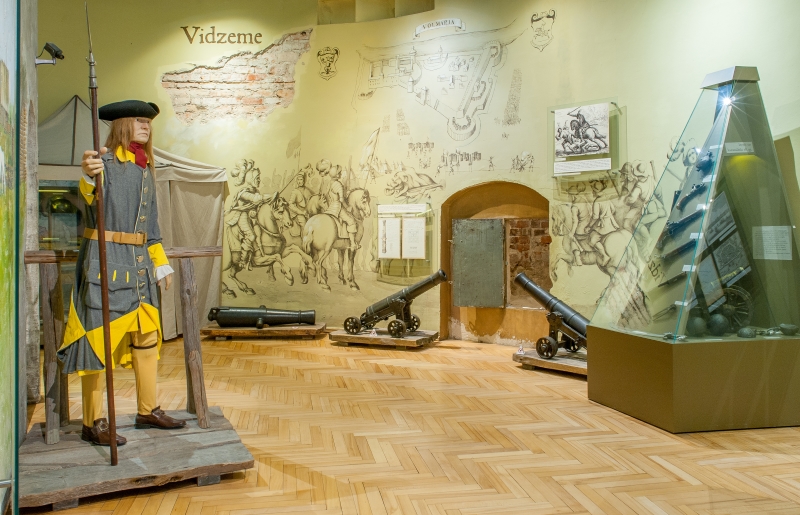
In one of the halls of the Powder Tower there is an exposition “Latvia and Latvian soldiers 17th – 18th century”. The exposition tells a story about the history of Latvia in the 17th -18th centuries. During that time, the coastal states of the Baltic Sea continued their struggle for domination in the Baltic Sea region.
After Livonian war the Latvian populated lands - Vidzeme, Kurzeme, Zemgale and Latgale were still called Livonia (Livland, Lieffland). At the beginning of 17th century Livonia consisted of the Duchy of Kurzeme - Zemgale, Duchy of Livonia and the county of Piltene. The Duchy of Kurzeme – Zemgale became a vassal state of the Polish-Lithuanian king, but the Duchy of Livonia was ceded directly to the Polish – Lithuanian state. The war in the territory of Latvia, during that time, was almost continuous. The most devastating of them were the Polish-Lithuanian-Swedish War (1600-1629) and the Great Northern War (1700-1721). During the Polish–Swedish wars the largest part of polish Duchy of Livonia was conquered by Swedish Empire. In the second half of the 17th century the territory of modern Latvian state was divided between two competing superpowers – Poland and Sweden. According to the laws and orders issued by the authorities of both sides, all social ranks of the local Latvian population had to perform military duties and participate in wars of their lords. Local peasants, who mostly was Latvians, are mentioned in historical sources: “There is no such peasant who is not a good shooter”.
During the Great Northern War (1700-1721), Swedish Vidzeme was conquered by Russia. In the second half of the 18th century Russia's expansion in Baltic region continued. Another historical region of modern Latvia - “Latgale” was incorporated by Russians in 1772. Finally, the Duchy of Kurzeme – Zemgale fell under the rule of the Russian Empire in 1795. The long wars, famine and plague throughout the territory of modern Latvia had severe consequences and caused a lasting economic decline. Latvian peasants were forced to make great efforts, to overcome the losses of wars and adapt to the new circumstances.
At this exposition, visitors can view various, era-specific weapons, muskets, guns, swords and cannons. Powder tower walls with newly opened passage, model of Koknese castle fortifications, ancient engravings and fortress plans give visitors insight into the historical significance of these buildings. The authors of the exposition have created visual composition which includes a mannequin of Latvian militia soldier serving in the Turaida Battalion of the Swedish Army.
Interactive digital projection device and rich informative material of the exposition allows visitors of the museum to gain new insights into the fascinating and dramatic history of Latvia in 17th – 18th century.



